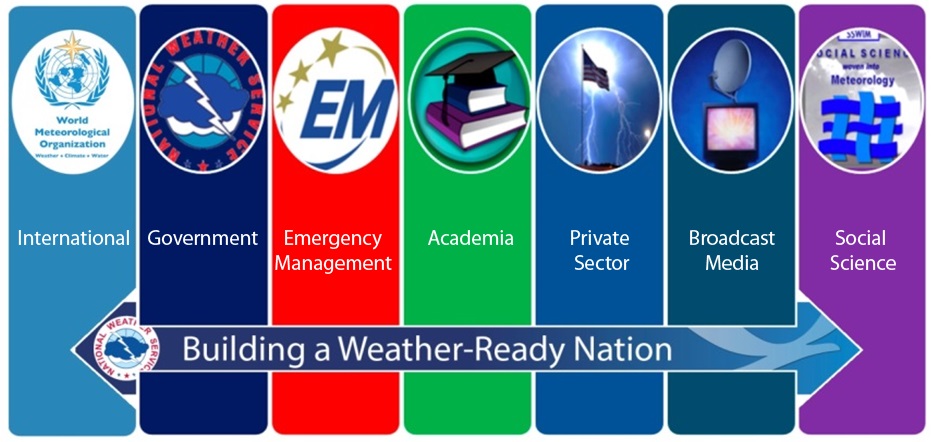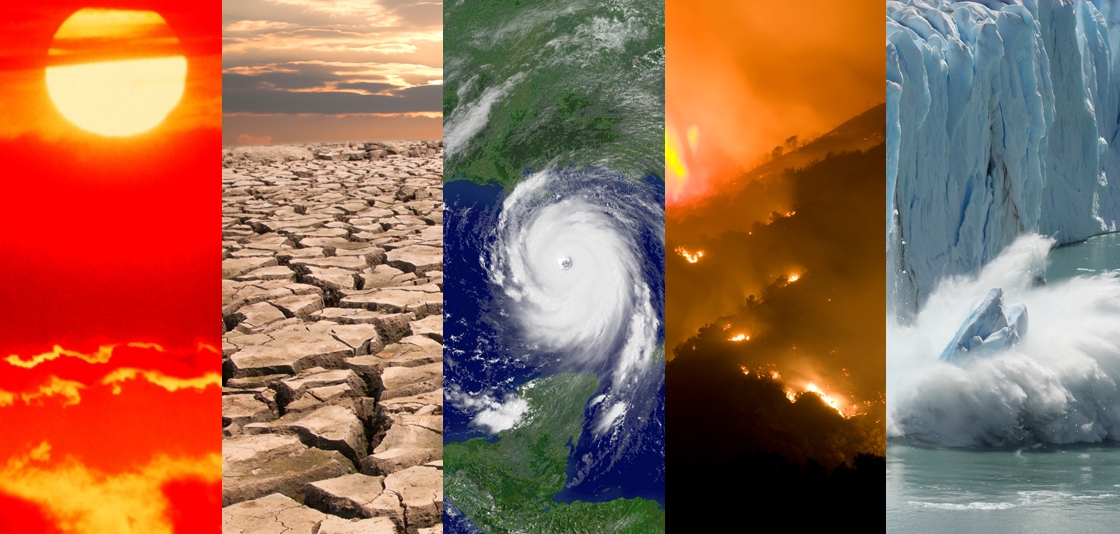Every day in America, millions of people access weather information to decide what to wear, whether they need to take an umbrella, adjust their schedule, or more importantly, to find out when to take immediate action when extreme weather threatens. Americans receive weather information from a wide variety of sources -- NOAA Weather Radio, TV broadcast, a favorite website, social media, or even a smartphone app. A wealth of weather information is literally at your fingertips. But how is weather information created? What is involved? The answer is actually more complex than one might think -- and involves the “Weather Enterprise.”
What is the Weather Enterprise?
The Weather, Water, and Climate Enterprise, also known as the Weather Enterprise for short, comprises of three main sectors that contribute to the science of weather and weather forecasting -- academia, government, and America’s Weather Industry. Each sector plays a critical role in understanding, observing, forecasting, and helping warn communities of danger; and all are working together to build a Weather-Ready Nation. Beyond just weather information, the Weather Enterprise works to meet the needs of water resource managers, businesses, farmers, and water-sensitive communities. Further, longer term decision makers use seasonal, yearly or even longer climate outlooks to help with extensive planning efforts, such as community or agricultural planning. There are very diverse needs and equally diverse users of weather, water, and climate information, which makes it essential for the different sectors of the Weather Enterprise to work together and meet the needs of a constantly changing society.
What are the different roles within the Weather Enterprise?
The Academic sector, a collection of universities, research laboratories, and government agencies, is the lifeblood of scientific advancement and innovation within the Weather Enterprise. The improvement of weather forecasting can be directly attributed to both basic and applied research. For example, better ways to observe the atmosphere and improvements in computer modeling showing the evolution of storms is a result of both types of research. The research community takes these advances and partners with government and America’s Weather Industry to “transition research into operations.”
Government, also called the public sector, provides foundational data for the Weather Enterprise, for both research purposes and also for the generation and delivery of commercial products and services by America’s Weather Industry. Figure 1 captures this contribution of foundational data using the iceberg analogy. Below the water resides these foundational data that support the forecasts, warnings, and other relevant information for decision makers and the public.
Figure 1: National Weather Service provides foundational data such as observations, forecasts, and warnings. America’s Weather Industry helps add value and distributes weather information across TV, radio, smart phones, and over the Internet.
America’s Weather Industry, also referred to as commercial weather providers, is the third sector that makes up the Weather Enterprise. Commercial weather companies contribute additional foundational data/innovation and build upon the foundational data provided by government and collectively work together to meet the needs of businesses, communities, and individuals here in the U.S. and all over the world. America’s Weather Industry works closely with the National Weather Service to save lives, protect property, and enhance the national economy -- helping build a Weather-Ready Nation as “Ambassadors” to the NWS and NOAA.
Working Together to Meet the Needs of Society
The United States experiences the most extreme weather of any country. In a typical year, the U.S. has over 26,000 thunderstorms, 5,000 floods, 1,300 tornadoes, and six Atlantic basin hurricanes. With communities expanding into ever more vulnerable areas and today’s economy becoming increasingly sensitive to extreme weather, it takes a collective effort within the Weather Enterprise to deliver the most accurate, most timely, most relevant weather information to all 330 Million Americans.
Learn more about how the Water Industry is changing.
Learn more about how the weather enterprise is changing.
 |
 |
| The Weather Entreprise | Various extreme weather events |